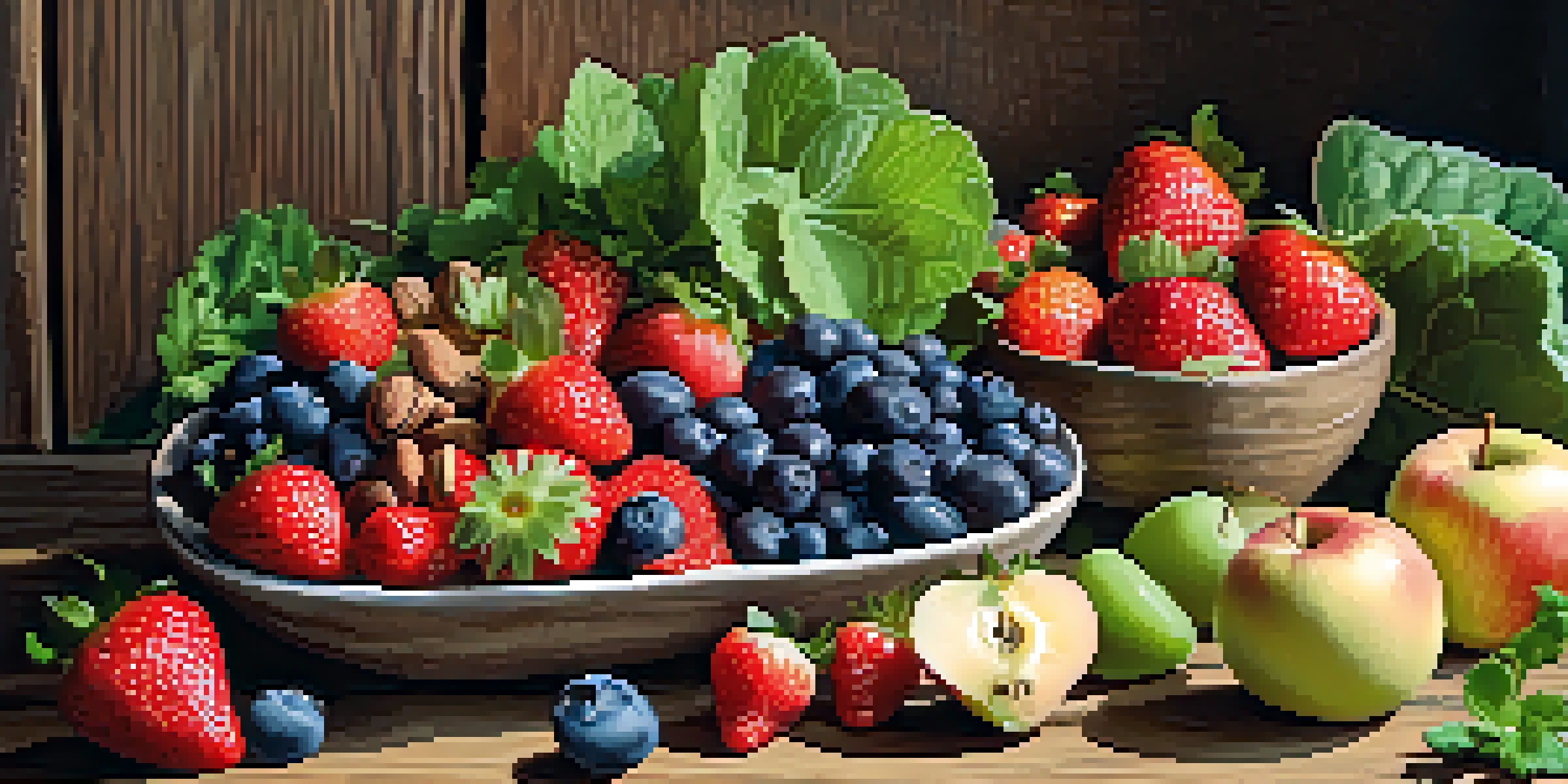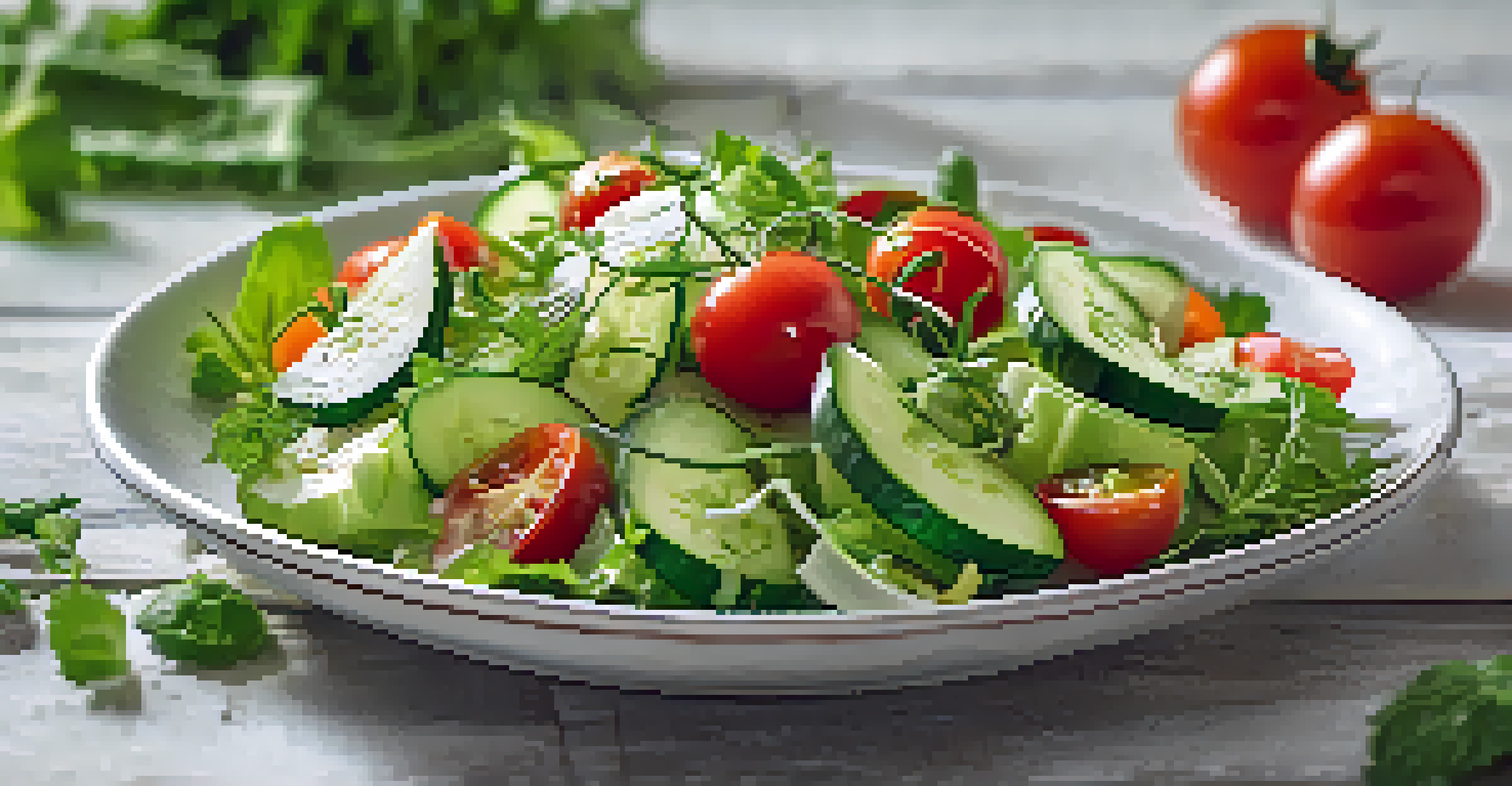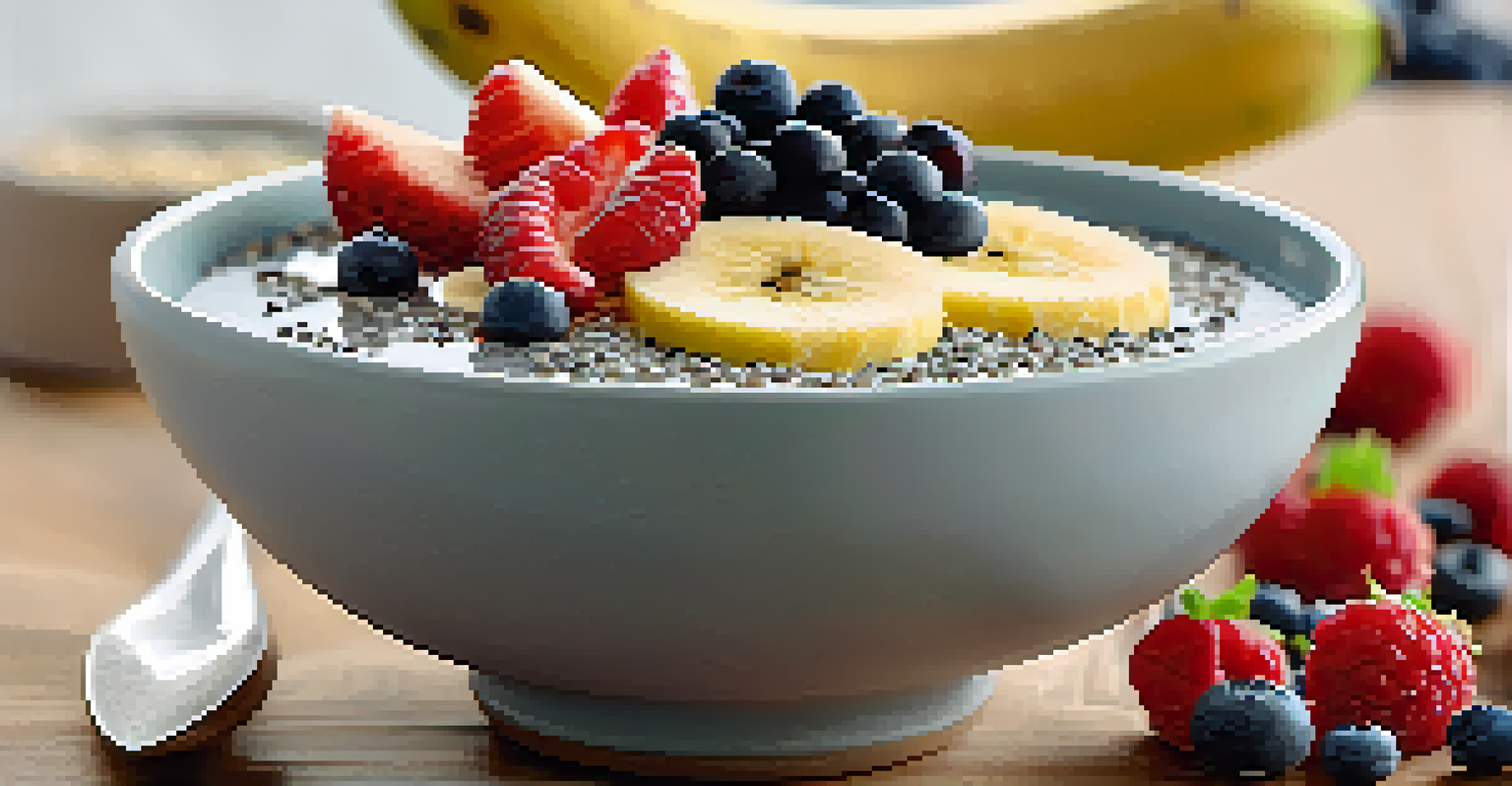The Science Behind Raw Foods and Cardiovascular Health

Understanding Raw Foods and Their Nutritional Value
Raw foods are foods that are uncooked and unprocessed, allowing their natural nutrients to shine. This category includes fruits, vegetables, nuts, seeds, and even sprouted grains. By keeping these foods in their natural state, you retain their vitamins, minerals, and enzymes, which can be lost through cooking.
Let food be thy medicine and medicine be thy food.
For example, a raw carrot contains more beta-carotene than a cooked carrot. This nutrient is essential for heart health, as it can help reduce the risk of cardiovascular diseases. Additionally, raw foods often have higher levels of antioxidants, which combat oxidative stress in the body.
When you incorporate a variety of raw foods into your diet, you not only enhance your nutritional intake but also add vibrant colors and flavors to your meals. This variety can make healthy eating more enjoyable and sustainable in the long run.
The Role of Antioxidants in Cardiovascular Health
Antioxidants are compounds that help protect your body from damage caused by free radicals, which can lead to chronic diseases, including heart conditions. Many raw foods are rich in antioxidants, such as berries, dark leafy greens, and nuts. These foods can enhance heart health by reducing inflammation and improving blood vessel function.

For instance, studies suggest that berries, particularly blueberries, can significantly lower blood pressure and improve cholesterol levels. By incorporating these antioxidant-rich foods into your diet, you can fortify your cardiovascular system against potential threats.
Raw Foods Boost Nutritional Value
Incorporating raw foods like fruits and vegetables enhances nutrient intake by retaining essential vitamins, minerals, and enzymes that cooking can diminish.
Eating a rainbow of raw fruits and vegetables ensures a diverse intake of antioxidants, each with unique benefits. This approach not only supports heart health but also promotes overall well-being.
Fiber and Its Importance for Heart Health
Dietary fiber plays a crucial role in maintaining a healthy heart. Found abundantly in raw fruits, vegetables, nuts, and seeds, fiber helps lower cholesterol levels, regulate blood sugar, and maintain a healthy weight. A high-fiber diet can reduce the risk of heart disease and stroke.
The greatest wealth is health.
For example, an apple, when eaten raw, provides a significant amount of soluble fiber, which helps to flush out excess cholesterol from your system. This simple dietary choice can lead to substantial heart health benefits over time.
In addition to its heart-protective properties, fiber supports digestive health, ensuring your body functions optimally. A diet rich in fiber encourages a balanced gut microbiome, which is increasingly recognized as essential for overall health.
Healthy Fats from Raw Foods and Heart Benefits
Not all fats are created equal, and incorporating healthy fats from raw foods can significantly benefit your heart. Raw nuts, seeds, and avocados provide monounsaturated and polyunsaturated fats, which are beneficial for reducing bad cholesterol levels. These healthy fats support cardiovascular health and can even help reduce inflammation.
For example, walnuts are an excellent source of omega-3 fatty acids, which are known to lower blood pressure and improve vascular function. Adding a handful of raw walnuts to your daily diet can make a positive impact on your heart health.
Antioxidants Support Heart Health
Consuming a variety of antioxidant-rich raw foods can significantly reduce inflammation and improve cardiovascular function.
Moreover, embracing raw sources of healthy fats can lead to a more satisfying diet, helping to curb cravings and promote a healthy weight. This balance is key to maintaining long-term cardiovascular wellness.
Hydration and Raw Foods: A Heart Connection
Staying hydrated is essential for overall health, and raw foods can play a significant role in this area. Many raw fruits and vegetables have high water content, contributing to your daily hydration needs. Proper hydration is vital for maintaining healthy blood flow and regulating blood pressure.
For instance, cucumbers and watermelon are not only refreshing but also packed with water, making them excellent choices for hydration. When your body is well-hydrated, your heart can pump blood more efficiently, reducing strain on the cardiovascular system.
Incorporating hydrating raw foods into your meals can be a delicious way to enhance your heart health. Think about creating a colorful salad or smoothie filled with water-rich ingredients to keep your hydration levels in check.
The Impact of Raw Foods on Cholesterol Levels
Research indicates that a diet rich in raw foods can help lower cholesterol levels, particularly LDL (bad cholesterol). Foods like raw oats, chia seeds, and fruits can aid in cholesterol management due to their soluble fiber content. This dietary fiber binds to cholesterol in the digestive system and helps eliminate it from the body.
For example, a breakfast bowl featuring raw oats topped with fresh berries not only tastes great but also supports heart health. Regular consumption of such meals can lead to significant improvements in cholesterol levels over time.
Fiber Lowers Cholesterol Levels
A diet high in fiber from raw foods can help lower bad cholesterol levels and support overall heart health.
Moreover, adopting a lifestyle that includes more raw foods can complement other healthy habits, like regular exercise and stress management, to further enhance cardiovascular health.
Tips for Transitioning to a Raw Food Diet
Transitioning to a raw food diet can be an exciting journey, but it doesn’t have to be all or nothing. Start by incorporating more raw foods into your meals gradually. You might begin with a raw salad or smoothie each day, slowly increasing the proportion of raw foods as you get accustomed to the change.
Experimenting with different raw recipes can keep your meals interesting. From raw veggie wraps to zoodles (zucchini noodles), the options are endless! Discovering new flavors and textures can make the transition enjoyable and sustainable.

Finally, remember that balance is key. You don’t have to eliminate cooked foods entirely. Instead, aim for a balanced approach that allows for both raw and cooked options, ensuring you receive the benefits of both cooking methods while prioritizing heart health.